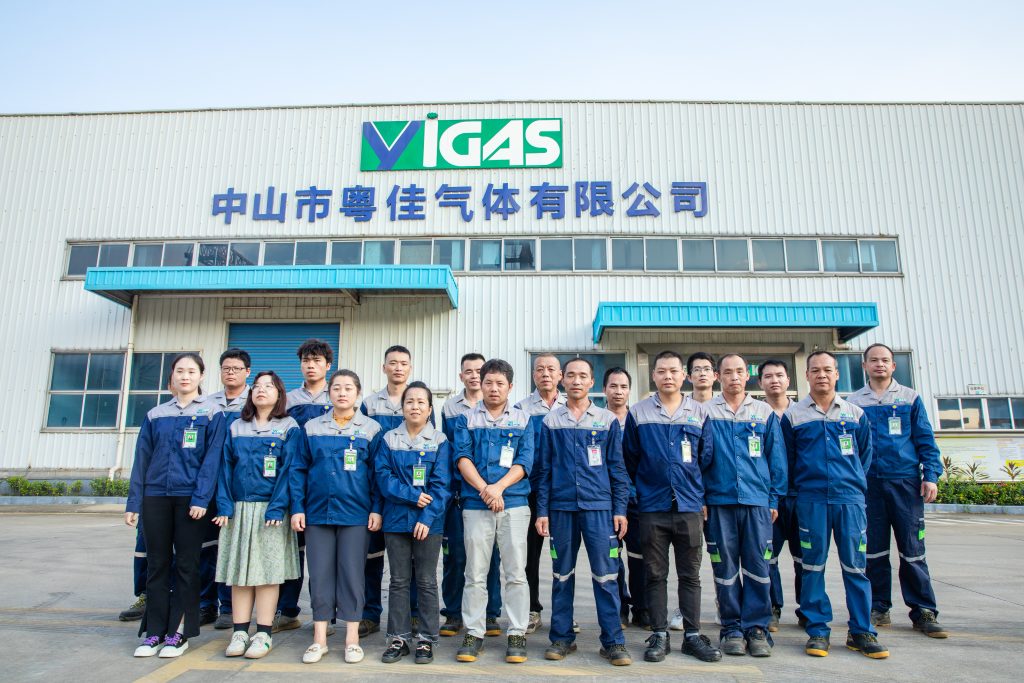Table of Contents
- Introduction
- How Is Helium Formed in the Earth?
- Extraction of Helium from the Earth
- Main Uses of Earth Helium
- Global Helium Supply and Demand
- YIGAS: Leading Industrial Gas Manufacturer in China
- Future of Earth Helium
- Summary Table
Introduction
Earth helium refers to helium gas that originates naturally from the Earth’s crust, where it is trapped in underground rock formations. This rare and valuable element is a by-product of radioactive decay and is extracted through natural gas mining operations. Due to its unique physical properties—being inert, extremely light, and non-reactive—helium plays a critical role in various industrial, scientific, and medical applications.

How Is Helium Formed in the Earth?
Helium is not synthesized on Earth in any industrial process; rather, it is a natural by-product of radioactive decay of heavy elements like uranium and thorium. Here’s how it happens:
- Radioactive Decay: Uranium and thorium isotopes decay over time, releasing alpha particles, which are essentially helium nuclei.
- Helium Accumulation: These helium atoms gradually accumulate in natural gas reservoirs, especially in certain sedimentary rock layers.
- Trapping Mechanism: Porous rock formations trap the helium along with natural gas, where it can be extracted commercially.
Note: Because helium is extremely light, any untrapped helium eventually escapes into the atmosphere and then into space. Thus, Earth has a finite supply of helium.
Extraction of Helium from the Earth
Earth helium is primarily extracted during the processing of natural gas fields with high helium concentrations. The extraction process includes:
1. Source Identification
- Only a few natural gas fields contain more than 0.3% helium.
- Helium-rich reserves are located in the U.S., Qatar, Algeria, Russia, and Tanzania.
2. Cryogenic Separation
- Helium is separated from natural gas through cryogenic distillation where the gases are cooled until helium is isolated.
- Because helium has the lowest boiling point (-268.9°C), it is the last to liquefy and can be removed in its gaseous state.
3. Purification & Storage
- Helium is purified to 99.99% or higher, depending on its intended use.
- It is stored in high-pressure cylinders or liquefied for ease of transport.
Main Uses of Earth Helium
Due to its unique characteristics, helium is indispensable in many sectors:
1. Medical Sector
- MRI Machines: Helium is used as a cryogenic coolant in MRI superconducting magnets.
- Respiratory Therapy: Mixed with oxygen (Heliox), it helps treat respiratory conditions such as asthma and emphysema.
2. Industrial Applications
- Welding: Helium is used as a shielding gas for arc welding, especially on aluminum and stainless steel.
- Leak Detection: Helium is used to detect leaks in vacuum systems due to its small molecular size.
3. Scientific Research
- Helium’s low temperature and inertness make it ideal for cryogenics and low-temperature physics.
- It is essential in particle accelerators and nuclear fusion research.
4. Aerospace and Ballooning
- Weather Balloons and Airships: Helium is preferred over hydrogen due to its non-flammable nature.
- Spacecraft Pressurization: Used in rocket engines and space systems to purge fuel systems.
5. Electronics & Semiconductor Manufacturing
- Used in cooling and cleaning processes for semiconductor wafers.
Global Helium Supply and Demand
The helium market is currently tight due to limited production facilities and increasing global demand.
- Top Producers: United States, Qatar, Algeria, and Russia.
- Emerging Sources: Tanzania and Canada are developing new helium extraction infrastructure.
- Challenges: Helium is non-renewable, and demand is outpacing supply.
Helium Prices in 2025
Due to supply constraints and geopolitical tensions, helium prices have surged in 2025. Prices for medical-grade helium and high-purity helium have increased significantly, affecting MRI services, semiconductor fabrication, and laboratory research.
YIGAS: Leading Industrial Gas Manufacturer in China

Founded in 1993, YIGAS is one of China’s top manufacturers and distributors of industrial gases, including helium, acetylene, argon, and carbon dioxide. Headquartered in Xintang Town, Zengcheng District, Guangzhou, YIGAS established YIGAS Group in 2012 and now operates eleven production bases.
Company Highlights
- Production Capacity: Serves over 5,000 customers with assets exceeding 500 million yuan.
- Certifications: ISO9001 (quality) and OHSMS18000 (safety) certified.
- Coverage: Distribution network spans the entire Pearl River Delta.
- Products:
YIGAS provides high-purity helium solutions for applications across electronics, medical equipment, and scientific industries, making it a reliable partner for businesses worldwide.
Future of Earth Helium
Given its importance and limited availability, the future of helium hinges on three major factors:
1. Conservation & Recycling
- Helium recycling systems in labs and hospitals will become more widespread to reduce waste.
2. New Exploration Projects
- Countries like Tanzania and Canada are investing heavily in new helium reserves.
3. Strategic Reserves & Policies
- National stockpiling (like the U.S. Federal Helium Reserve) will influence global pricing and availability.
Summary Table
| Aspect | Details |
|---|---|
| Source | By-product of uranium/thorium decay trapped in natural gas fields |
| Main Extraction Method | Cryogenic separation from natural gas |
| Key Uses | Medical (MRI), Welding, Leak detection, Research, Ballooning, Electronics |
| Top Producing Countries | USA, Qatar, Algeria, Russia |
| Major Challenges | Finite supply, high cost, growing demand |
| YIGAS Highlights | Founded in 1993, 11 bases, ISO certified, provides helium and other industrial gases |

